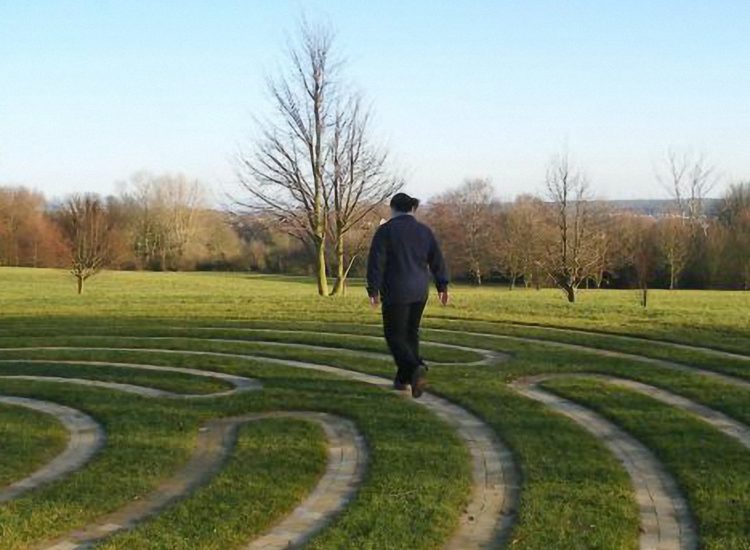
23rd April 2021
A Wildflower Labyrinth in the Abbey Gardens
The 36m diameter labyrinth, designed to celebrate 1000 years since the founding of the Abbey of St Edmund, has been planted on the site of the former tennis courts. It will mark the east end of the Abbey of St Edmund offering views of the Abbey Church and the rest of the Abbey Ruins all around. New tennis courts opened in another part of the Abbey Gardens on 1 July.
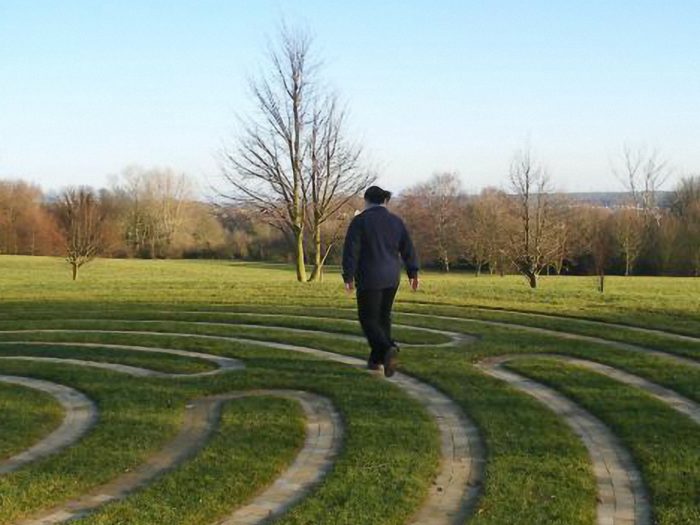
Walking the Canterbury Labyrinth

Wildlife value
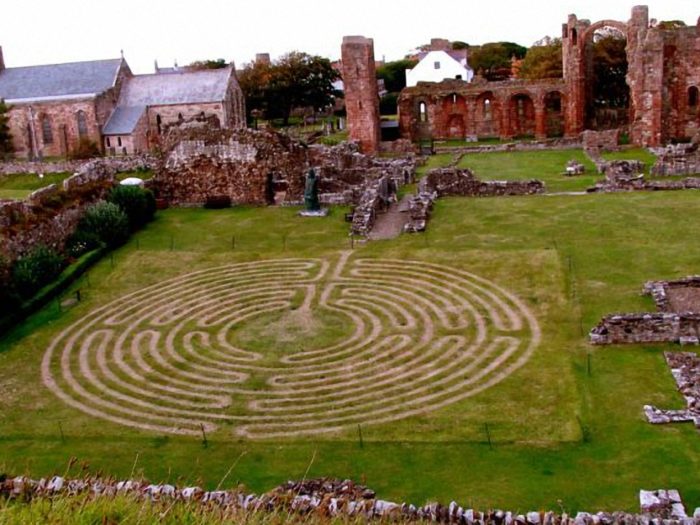
Lindisfarne Labyrinth
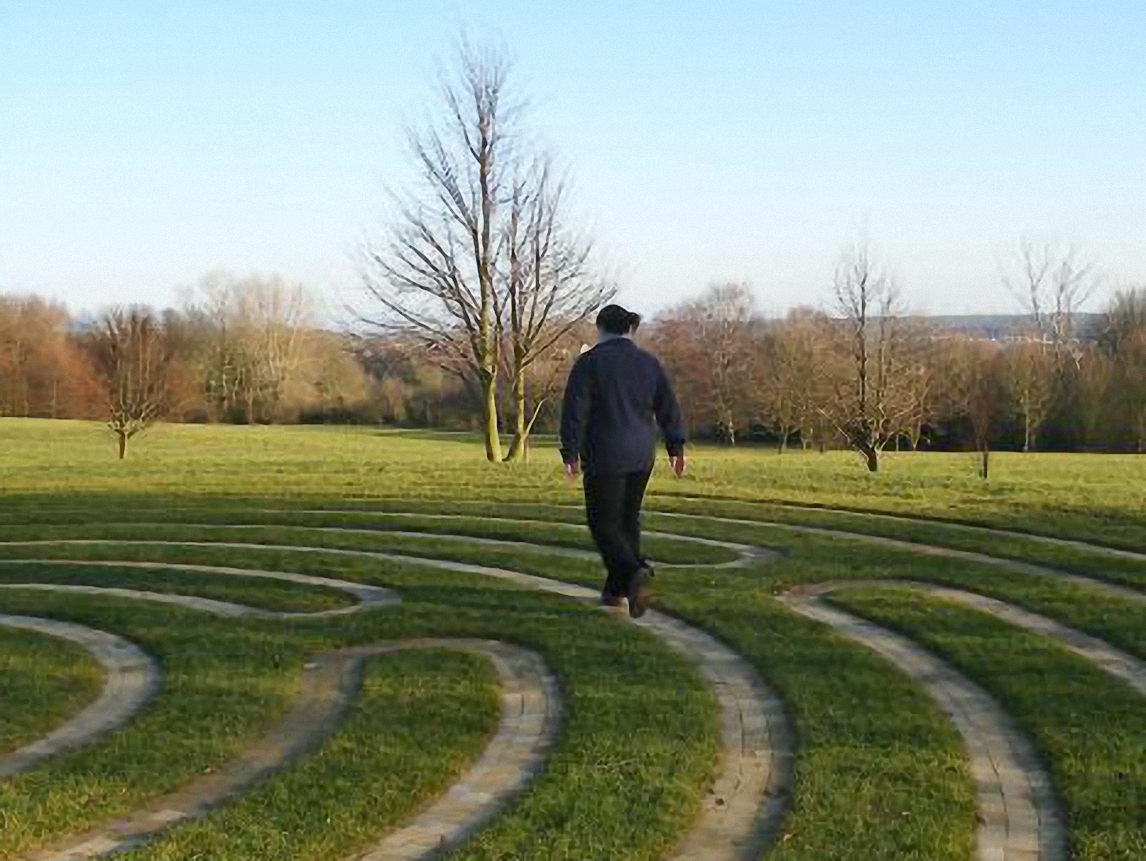

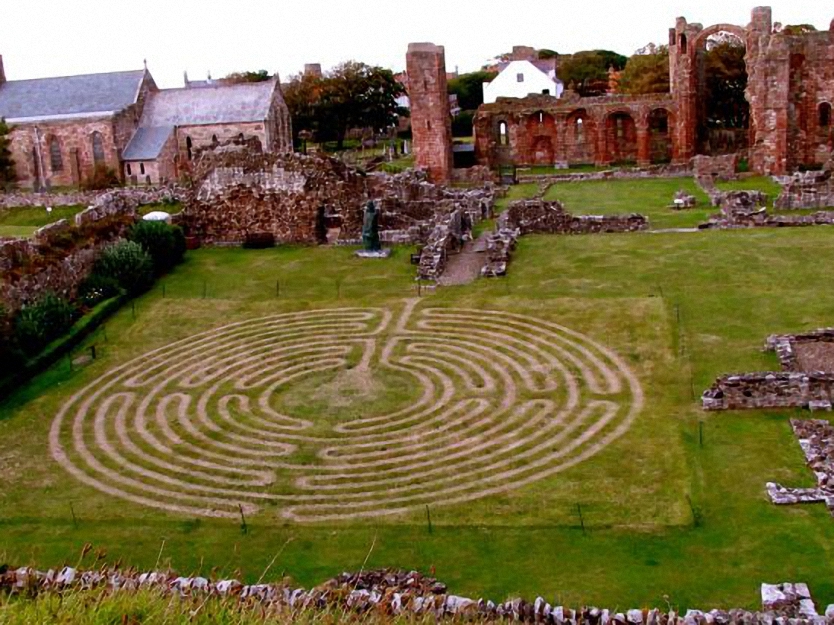
The wildflowers planted in the spring of 2020, contain a mix of perennial herbaceous plants including Blackeyed Susan, Sea Holly, Yarrow and Yellow Ox Eye. They have been planted by West Suffolk Council as part of its work with the Abbey of St Edmund Heritage Partnership.
Cllr John Griffiths, Leader of West Suffolk Council said: “The Wildflower Labyrinth is just one of many examples of the work that we, in partnership with others in the community, can do and are delivering to improve local biodiversity. Once it is in bloom, this Labyrinth will not only add to the beautiful colours of the Abbey Gardens, but attract bees, butterflies and other pollinators benefitting wildlife, and improve our environment. The former Abbey is of course an area where people can come to relax and reflect amid both the beauty of nature and the stonework of our history. The Gardens, and other parks and open spaces we manage, are great places to visit, enjoy a walk and mentally recharge and I’m sure the Wildflower Labyrinth will add to that enjoyment.”
The Abbey of St Edmund Heritage Partnership support the project.
Reverend Canon Matthew Vernon, chairman of the Partnership said: “The Wildflower Labyrinth was planned as part of a wider celebration of the Abbey’s 1000 years much of which of course has had to be rescheduled due to Covid19. But the labyrinth will still be something that people can come and safely enjoy as the flowers begin to show in the late summer.
“Labyrinths are a spiritual exercise encouraging reflection and contemplation. Part of many traditions, they are associated with pilgrimage, such as the medieval labyrinth at Chartres Cathedral in France. Down the centuries, visitors came to the Abbey of St Edmund to be more aware of God. The Wildflower Labyrinth continues that tradition on this sacred site.”
Often, Labyrinths were aligned with the spiritual axis of a sacred site so that they could gain spiritual energy for those who walked the Labyrinth.
How to use a Labyrinth
A labyrinth is a simple, winding path that leads to the centre, whereas a maze can have several paths. It looks like a maze, but there are no tricks or dead ends. You are invited to follow the path of the labyrinth, at a pace that feels right to you. We ask you to respect other users and the peace of this place. If you meet someone on the path, do what feels natural to accommodate or pass them. The path will lead you to the centre where you can pause before following the same path back to the beginning.
Labyrinths have been part of many spiritual traditions since ancient times. Following the path carefully is an opportunity, in our busy lives, for reflection and contemplation. The twists and turns of the path reflect our journey through life. Labyrinths are associated with pilgrimage, such as the medieval labyrinth at Chartres Cathedral in France. Down the centuries, visitors came here to the Abbey of St Edmund to be more aware of God. This Wildflower Labyrinth continues that tradition on this sacred site.
Similar articles
9th May 2025
‘Significant’ conservation works start
Scaffolding has been installed and a footpath is closed in Bury St…
24th April 2025
Town Council pledges to Abbey of St Edmund, Reborn
The Bury St Edmunds Town Council has pledged £50,000 to the Abbey…
3rd February 2025
New Panels for Abbey of St Edmund 1000 Murals
The team behind the Abbey 1000 celebrations which took place in 2022,…
View all news
